If you frequently wash your vehicle, you may have noticed that your brake discs can develop rust spots after the wash. This can not only be unsightly, but it can also affect the performance of your brakes.
In this article, we will provide tips and techniques to prevent rust from forming on your brake discs after washing. By following these simple steps, you can keep your brakes looking clean and in top condition. Let’s get started!
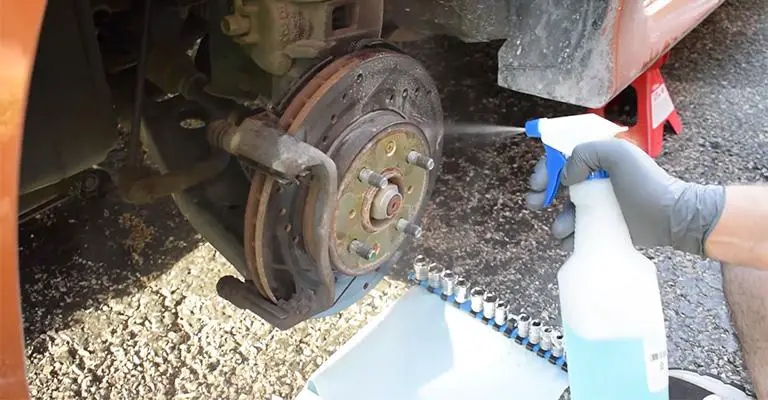
Contents
Why Does My Car Have Rusted Brakes After I Wash It?
It’s been a while since you’ve washed your vehicle and shined it up. Taking some pictures of it reminded you how good it was. However, what is that orangey-brownish matter on the brake rotors? Are those rust spots?
Having rusted brakes after a car wash isn’t uncommon – you’re not alone and not going about it wrong. Nevertheless, let’s learn what’s happening and what we can do about it.
Is It Normal To Have Rust On Brake Rotors?
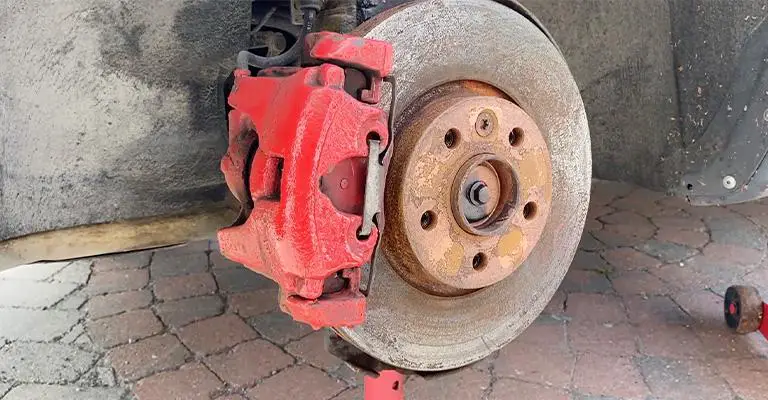
It is normal for your brake system to rust, and you do not need to be concerned. A thin layer of rust can be formed on the surface of brake rotors if the vehicle is parked outside during a rainstorm or heavy snowfall.
Whenever moisture coats the brake rotor’s surface, rust forms. You shouldn’t worry, though.
The brake pads will quickly dislodge the thin layer of rust from the rotor after a few minutes of driving since the rust exists only on its surface.
It is through brake pads that brake rotor surfaces are cleaned of contaminants, including light surface corrosion.
Rust Never Sleeps
Rust will happen when iron and water come together; in some cases, it does so quite quickly. Iron is the primary material for brake rotors.
By the time the car has dried, you should be able to see the oxidation process beginning.
It doesn’t appear to be deep-seated rust, which is good news. The following tips will help you clean rusted brakes and make them look like new.
Spray And Wipe The Rotors
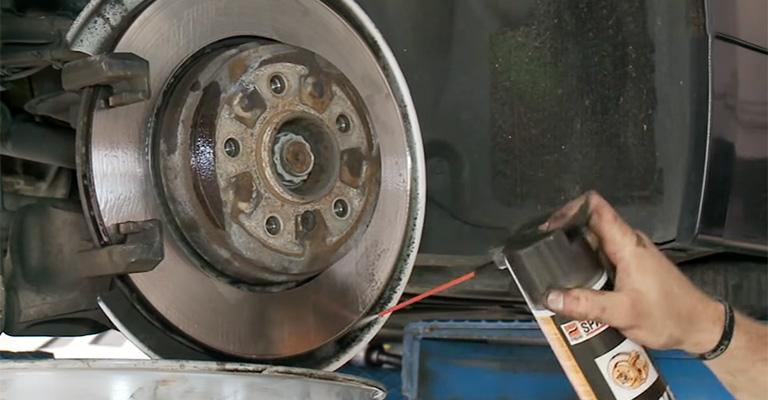
A spray bottle contains rust-inhibiting agents for brake rotors. Whenever you detail your car, spray some on a cloth and wipe the rotors down.
Break Out The Leaf Blower
You may want to go out and get a leaf blower, a hair dryer, or your shop vac set for blowing instead of suctioning. The rust will not appear on your brake rotors after they are washed and air-dried.
Go For A Drive
A few minutes of driving and braking may be enough to blow away or flake off that newly formed rust.
You may be undoing some of the cleanings you just did, so there may be puddles. Here are some other fixes to consider.
Upgrade Your Rotors
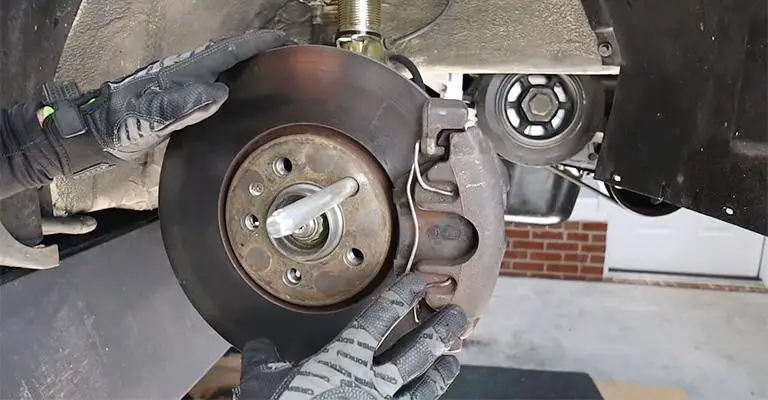
There is an increasing trend for drivers to upgrade their brakes with coated rotors, which are covered with a specially formulated polymer coating to protect against corrosion under much harsher conditions than your car normally encounters just after it has been washed.
The road salt and all the other ingredients make a midwestern winter last an equivalent of 18 months.
Ultimately, your choice will depend on how often you wash your car, how particular you are about everything looking great, and how much time you have.
There are options to make it better for those who own vehicles with open wheels (where you can see the brakes).
Tips
Using washing up liquid on wheels & brakes will cause them to rust faster since washing up liquid contains high amounts of salt.
Once you have washed the car, drive it on a safe road and brake heavily so the water evaporates off and you can blow out any remaining water.
To remove rust from the edges of the discs, wire brushes the edges until they are bright steel, then paint the edges only with high-temperature engine paint silver.
Do Rusty Brake Rotors Need To Be Replaced?
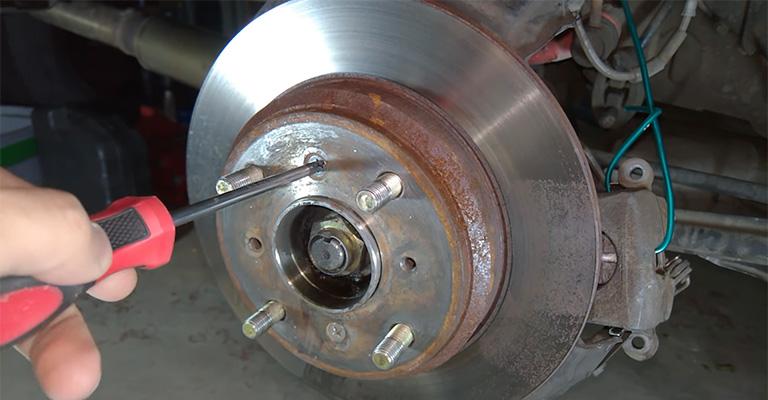
The lifespan of brake rotors is limited. The rotors wear down incrementally each time you apply the brakes. It is important to note that several factors contribute to the rate of rotor wear, including:
- An important factor to consider is the rotor quality,
- Using the correct brake pads,
- What kind of driving style do you have? How fast do the rotors cool down,
- You should also consider how much exposure your rotors receive to moisture and road salt – elements that cause excessive rust and corrosion.
Replace or resurface rotors every time new pads are changed to ensure new pads properly bed in and promote fresh friction.
The rotors on your rusty vehicle should be replaced if they show signs of wear. A worn-out brake rotor will exhibit the following physical symptoms:
Vibrations when braking:
When rotors are warped or excessively worn, the vehicle’s pedal and the steering wheel can vibrate irregularly. It may feel like the brake pedal is pulsating when a vehicle’s brake rotors are warped.
Grooves:
Observe any noticeable grooves on your brake rotors that need to be replaced. To inspect your brake rotors, the wheel will need to be removed on vehicles with hub caps that do not expose the rotor. You typically feel or see a visible lip following the rotor to the edge.
Scoring:
Usually, scoring occurs when brake pads wear out severely. In the absence of adequate padding, the underlying metal scrapes against the rotor when decelerating. In time, this can cause deep grooves on the rotor’s surface.
Heavy rust:
Brake rotors will inevitably rust. When it comes to surface rust, it usually wears off after a few miles of driving. When the rust is deep, it is possible that the rotors must be replaced if pitting occurs.
Is Surface Rust On Rotors Bad?
You may not see anything wrong with your rotors, but they may signify something more serious. You can normally remove light surface rust caused by overnight moisture by engaging the brakes the next time you drive.
A rotor sitting for a long time can become pocked and corroded due to rust eating away at it.
Final Words
Get in and drive it. All rust will disappear after a few stops on the brakes. It is not a problem at all if you have light rust. Stainless steel alloy is the material of choice for modern brake discs.
The rust doesn’t even appear when it rains. By driving around the block, you will be able to dry them. A couple of brake applications help wear away slight surface rust.
